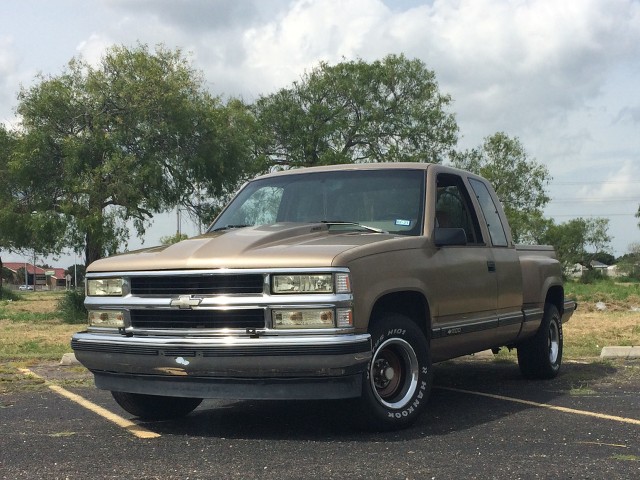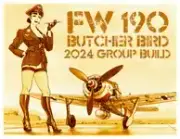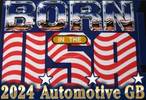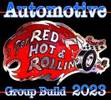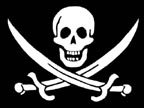Post by 406 Silverado on Dec 14, 2011 16:08:20 GMT -5
Replicating old crusty rust and chipping with oils and pigments.
This is a fairly simple technique that is similar to the HS or salt technique that will create texture to the paint and rust and give a blistered look. This is best used for old rusty tanks or other vehicles...and even ships.
Since I have removed the techniques section of my website I get fequent emails asking about this technique. So I direct people here to this SBS and now I am adding a video I had made some time ago. I hope this helps anyone interested. I also have an article showing the oils and pigment technique in the first issue of the AK Interactive weathering magazine.
For this SBS I am using spare track links to my JSU 152. I've chosen white for the paint color to simulate the white wash as on the rest of the model.
First thing to do is get a base rust color on the model or part. I painted the tracks a dark rust color using Tamiya browns.

I then mixed up a thick oil wash using W&N and MIG productions oils. You want the wash thicker than normal as this will form a barrier, like with HS. You don't have to seal the rust base color with a clear coat.


While the oils are still wet I applied a generous amount of pigments to the tracks starting with the darkest color and then randomly applying the brighter colors here and there, not complete coverage.

The pigments will absorb the oils and carrier and start to dry.


I didn't wait for this to dry completely and just went onto getting the Tamiya flat white thinned and the AB ready. The white is applied in light misted coats, avoiding getting the surface too wet.

This was allowed to dry while I cleaned the AB and put that stuff away....10 minutes.
Using various small stiff brushes I started to gently remove the paint revealing the underlying rust. I did NOT use water to remove the paint.

After a bit more paint chipping here is what it is starting to look like. You will also notice that the pigments are staining the surrounding paint, which is what we want.

It may be hard to see in the pic but there is texture to the rust and also the chipping has dimension to it.
I should have used a white back round for the pics which would have showed the detail better..but I was too lazy and in a hurry to get this posted to help others working on this type of effect.
This is the basic SBS for this type of rusting technique. I am sure once you try it you will see how it works and can improve on it to fit your needs.
I hope this is useful to you.
This is a fairly simple technique that is similar to the HS or salt technique that will create texture to the paint and rust and give a blistered look. This is best used for old rusty tanks or other vehicles...and even ships.
Since I have removed the techniques section of my website I get fequent emails asking about this technique. So I direct people here to this SBS and now I am adding a video I had made some time ago. I hope this helps anyone interested. I also have an article showing the oils and pigment technique in the first issue of the AK Interactive weathering magazine.
For this SBS I am using spare track links to my JSU 152. I've chosen white for the paint color to simulate the white wash as on the rest of the model.
First thing to do is get a base rust color on the model or part. I painted the tracks a dark rust color using Tamiya browns.

I then mixed up a thick oil wash using W&N and MIG productions oils. You want the wash thicker than normal as this will form a barrier, like with HS. You don't have to seal the rust base color with a clear coat.


While the oils are still wet I applied a generous amount of pigments to the tracks starting with the darkest color and then randomly applying the brighter colors here and there, not complete coverage.

The pigments will absorb the oils and carrier and start to dry.


I didn't wait for this to dry completely and just went onto getting the Tamiya flat white thinned and the AB ready. The white is applied in light misted coats, avoiding getting the surface too wet.

This was allowed to dry while I cleaned the AB and put that stuff away....10 minutes.
Using various small stiff brushes I started to gently remove the paint revealing the underlying rust. I did NOT use water to remove the paint.

After a bit more paint chipping here is what it is starting to look like. You will also notice that the pigments are staining the surrounding paint, which is what we want.

It may be hard to see in the pic but there is texture to the rust and also the chipping has dimension to it.
I should have used a white back round for the pics which would have showed the detail better..but I was too lazy and in a hurry to get this posted to help others working on this type of effect.
This is the basic SBS for this type of rusting technique. I am sure once you try it you will see how it works and can improve on it to fit your needs.
I hope this is useful to you.







